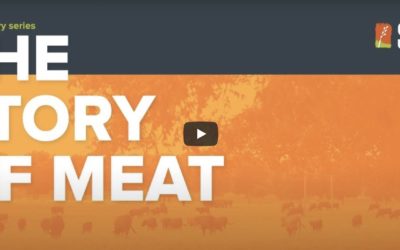Texas Testing New Feral Hog Poison in Race to Control Invasive Species
The widespread use of herbicides and pesticides (poisons) for wildlife “management” goes back to at least 1835 with the invention of strychnine.
For about 180 years now, wolves, coyotes, foxes, badgers, cougar, bear, bobcats, skunks, prairie dogs, birds, insects, fish and plants to name a few have been increasingly subjected to these poisons. As reported below, free-ranging pigs are now going to be added to the list. The results are always the same—massive unintended damage to wildlife and ecosystems including by-kill of a host of other species including soil life.
For millennia humans have raised pigs to roam and forage at large. Always, and historically in Texas and throughout the South, these were seasonally gathered for slaughter. Years ago, trapped wild pigs could be sold straight into the slaughter line at any abattoir.
Then about 40 years ago, the big hog producers got the agencies to make it illegal to slaughter free-ranging pigs, even though they are healthier and more wholesome than the pork raised in Big Pork’s inhumane, filthy, epidemic-ridden, and environmentally disastrous pig factories. The so-called feral pig “problem” developed from that point.
Poisoning pigs, with whatever poison—let alone Warfarin which was developed as rat poison—makes as much sense as poisoning free-range cattle, leaving them to rot, and in the process making the survivors unsafe to eat. The solution is obvious: like free-range cows, put these domestic animals back in the human food chain. The environment will benefit as will landowners and their finances along with the public, which will have a nutritious, delicious, and inexpensive source of pork.
Big Pork—the coalition of factory pork producers, universities, agencies, and legislatures—have gone “whole-hog” to block this common sense solution by hiding behind regulations which are as comprehensible as rocket science. Originally intended to help small farmers and ranchers, today these regulations safeguard Big Pork’s monopoly markets, financial interests and turf by restricting competition and obtaining subsidies at the expense of the public, landowners, small producers and small abattoirs. It is beyond ironic that Smithfield, America’s largest pork producer and beneficiary of this perversity, is controlled by the Chinese Communists.
Follow the money. . . it leads to the real pig “problem.”
NOTE: this article was originally published to HoustonChronicle.com on October 19, 2023. It was written by Rebekah F. Ward.
Ranchers may soon have a new tool to fight the feral hog, a rampant invasive species in Texas that sows chaos by destroying property and crops across the state: pig food laced with blood thinners.
When mixed with food, the drug warfarin has proven effective in culling the invasive hogs, according to a study by Texas Wildlife Services that was conducted at the behest of the state Legislature.
As with many such measures, the effort, which takes weeks to implement, was most effective when people did not cut corners.
“If the landowner follows a very specific application protocol, actually teaches the pigs how to feed out of a hog-specific feeder and integrates a nontoxic bait over several weeks before they ever introduce a hot bait, the product does kill the pigs effectively,” said Mike Bodenchuk, the director of Texas Wildlife Services.
About half of all feral hogs in the country make Texas their home, according to current estimates. The more than 3 million wild pigs in the state cause in excess of $500 million in property and crop damage each year. The hogs, which have no natural predators, damage native wildlife and carry harmful diseases.
Bodenchuk, who led the study with Texas A&M wildlife specialist John Tomeček, monitored 23 sites in 10 counties across the state using 24-hour video surveillance. The drug, which kills pigs over an eight-day period after landowners begin feeding them hot bait, worked across multiple ecoregions and seasons* *when landowners did not scare off the hogs.
John McGlone, a Texas Tech professor who has researched pig behavior for 40 years, said the animals are afraid of humans. His research found that food and odors are the best ways to reel hogs in. His group has developed pheromones that are attractive to the animals.
Not all Texans have the same goal, though. Efforts to reduce the population by killing off hogs have fallen short of goals, and some biologists feel vaccinating them against diseases or giving them an infertility injection could help stave off the most important threats.
McGlone thinks poisoning pigs is not the final answer, especially considering the effects some substances can have on other animals and hunters who kill and eat the hogs.
GUNS BLAZING: Hunting feral hogs with $8,000, a helicopter and a machine gun
Bodenchuk said that while a toxicant is not a silver bullet, it can be very useful in East Texas, where parcels are smaller and a landowner may have access to the pigs only in a small portion of their home range.
While he said human consumption of the poisoned pigs is not an issue with warfarin due to its short half-life and the fact that it dyes a pig’s insides blue to ward off hungry hunters, he does worry about other animals reaching the feral hog-specific feeders, specifically javelinas, which have a similar long snout, and bears.
“We had no javelinas get access to the feeder with the toxic bait in there, they never opened the door,” Bodenchuk said of his study’s findings. “But anything a pig can get into a black bear can get into … I think we need a very specific protocol to avoid accidentally poisoning a bear,” he said.
Texas authorities will decide if the substance can be approved for landowners’ use in the state, and any additional rules they should follow.
—
For more posts like this, in your inbox weekly – sign up for the Restoring Diversity Newsletter



